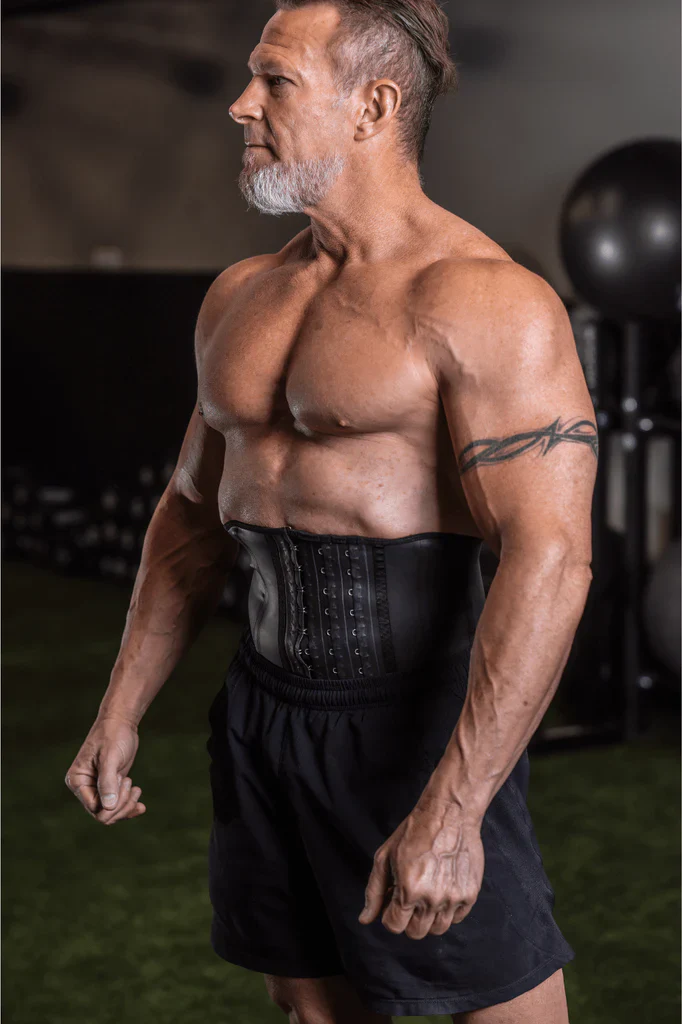Introduction to Waist Trainers
Waist trainers have taken the fitness world by storm. These trendy garments promise to shape your silhouette while boosting confidence and motivating you on your wellness journey. But what exactly are waist trainers? How did they become a staple in many wardrobes?
From celebrities flaunting their hourglass figures to everyday individuals seeking a little extra support, waist trainers seem to be everywhere. Whether you’re looking to enhance your curves or simply want something stylish for workouts, understanding who can truly benefit from a waist trainer is essential. Let’s delve deeper into this fascinating topic and discover if it could be the right fit for you!
History of Waist Training
Waist training has a fascinating history that dates back centuries. The concept of shaping the waist is not new; it can be traced to ancient civilizations. In cultures such as the Greeks and Romans, garments were worn to emphasize feminine curves.
During the Renaissance in Europe, corsets became popular among women. These tightly-fitted undergarments molded the body into an hourglass shape, a desired silhouette of that era.
By the 19th century, waist training reached its peak with highly structured corsets made from steel and whalebone. Women often wore them daily to achieve their ideal figure.
The practice saw a decline during World War I due to changing fashion trends and women’s roles in society. However, modern times have revived interest in waist trainers, now available with enhanced materials for comfort and flexibility.
How Waist Trainers Work
Waist trainers are designed to create a tighter silhouette by compressing the waist. They typically consist of thick elastic materials or sometimes latex, which provide firm support.
When worn, these garments apply consistent pressure to the midsection. This compression can lead to an immediate reduction in waist size and improve posture throughout the day.
As you wear a waist trainer over time, it may encourage your body to adapt and shift into a more defined shape. The heat generated can also promote sweating in that area, potentially leading to temporary weight loss from water retention.
It’s essential to note that while they can enhance appearance temporarily, they do not replace healthy habits like diet and exercise for long-term results. Using them wisely is key for those looking for an aesthetic boost without compromising health or comfort.
Benefits of Using a Waist Trainer
Waist trainers have gained popularity for several compelling reasons. Many users appreciate the immediate visual effects, as these garments can create a more defined waistline and enhance body shape.
Besides aesthetics, waist trainers may aid in posture support. Wearing one encourages an upright stance, which can alleviate back discomfort during daily activities or workouts.
Some individuals claim that using a waist trainer helps with appetite control. The compression around the midsection can lead to reduced hunger pangs, potentially aiding those on weight management journeys.
For fitness enthusiasts, incorporating a waist trainer into workout routines might increase perspiration in the abdominal area. This could provide additional motivation and help some feel more empowered during exercise sessions.
Many find that wearing a waist trainer boosts confidence levels. Feeling good about one’s appearance often translates to improved self-esteem throughout various aspects of life.
Who Can Benefit from a Waist Trainer?
Waist trainers can appeal to various individuals, making them versatile tools for body shaping. Those looking to enhance their hourglass figure often find waist trainers beneficial. They provide support and structure during workouts, helping improve posture while exercising.
Many women post-pregnancy seek ways to regain their pre-baby bodies. A waist trainer may assist in this journey by offering gentle compression around the midsection.
Fitness enthusiasts frequently use waist trainers as part of their training regimen. The added resistance can heighten the effectiveness of certain exercises, promoting muscle engagement.
Additionally, some people wear waist trainers simply for cosmetic purposes during events or special occasions. This temporary enhancement boosts confidence and creates a sleek silhouette under clothing.
Anyone aiming to redefine their shape or boost workout performance could explore the advantages that a waist trainer offers.
Tips for Choosing the Right Waist Trainer
Choosing the right waist trainer can feel overwhelming with so many options available. Start by understanding your goals. Are you looking for everyday wear, or something to enhance workouts?
Consider the material as well. Breathable fabrics like cotton are great for comfort, while latex provides more compression but may not be suitable for extended use.
Sizing is crucial. Take accurate measurements of your waist and consult sizing charts provided by manufacturers. A snug fit without excessive tightness is ideal.
Look for adjustable features. This allows you to customize the level of compression as your body changes over time.
Don’t forget about style! Choose a design that fits comfortably under clothing, whether it’s a dress or gym gear, making it easy to incorporate into your daily routine. Keep these tips in mind when selecting your perfect waist trainer.
Important Considerations Before Starting Waist Training
Before diving into waist training, it’s crucial to assess your personal health and fitness levels. Consult with a healthcare professional, especially if you have pre-existing conditions.
Consider the material of the waist trainer. Different fabrics offer varying levels of comfort and support. Look for something breathable yet sturdy enough to provide effective compression.
Start slow. Allow your body time to adjust by wearing it for short periods initially. Gradually increase wear time as you become accustomed.
Listen to your body throughout the process. If you experience discomfort or pain, it’s essential to reassess your approach.
Be mindful that waist trainers are not a miracle solution for weight loss or an instant hourglass figure. Pairing them with a balanced diet and regular exercise yields better results in achieving long-term goals.
Do’s and Don’ts of Wearing a Waist Trainer
When wearing a waist trainer, start slow. Gradually increase the time you wear it each day to allow your body to adjust. Listen to your body; if you feel discomfort or pain, remove it immediately.
Choose the right size for comfort and effectiveness. A waist trainer that’s too tight can hinder breathing and cause unnecessary strain on your organs.
Stay hydrated while using one. This helps in digestion and keeps your skin healthy during the process.
Avoid sleeping in a waist trainer. Your body needs freedom to move at night for proper recovery.
Don’t rely solely on a waist trainer for weight loss or shaping goals. Combine its use with exercise and a balanced diet for optimal results.
Steer clear of extreme tightening or prolonged wear beyond recommended hours as this can lead to health complications over time.
Potential Risks and Side Effects
Using a waist trainer can come with potential risks and side effects that users should be aware of. One major concern is the possibility of restricted movement. Tight compression can limit your ability to bend or twist comfortably.
Another issue is skin irritation. Prolonged use may lead to rashes, redness, or chafing in areas where the fabric rubs against the skin.
There’s also a risk of internal pressure on organs. Wearing a waist trainer too tightly might compress internal structures, potentially leading to digestive discomfort or issues in breathing.
It’s crucial to listen to your body while wearing one. If you experience pain or discomfort, it’s wise to remove it immediately and reassess your approach to waist training.
Seek professional advice if you’re unsure about starting this practice, especially if you have pre-existing medical conditions.
Conclusion
Waist trainers have become a popular accessory for those looking to enhance their body shape, boost their confidence, and support their fitness goals. Whether you’re preparing for an event or seeking daily support during workouts, understanding who can benefit from using a waist trainer is crucial.
A diverse range of individuals can find value in waist trainers. For many women aiming to achieve an hourglass figure, these garments offer immediate visual results by compressing the midsection. Fitness enthusiasts appreciate them as motivational tools that encourage better posture and core engagement during workouts.
Postpartum women often turn to waist training as part of their recovery journey. The gentle compression helps provide support while they regain strength after childbirth. Even people undergoing weight loss journeys may utilize waist trainers as they help maintain focus on dietary changes through physical reminders.
Athletes might also consider incorporating waist trainers into their routines for improved performance and stability in certain activities. However, it’s essential to assess personal comfort levels and activity types before making a decision.
Choosing the right waist trainer involves considering size, material, and purpose. It’s important to select one that fits well without causing discomfort or restricting movement too much. Always prioritize quality over trends when shopping around.
Before starting any form of waist training, listen to your body closely and consult with health professionals if needed. It’s vital not only to wear the product correctly but also understand its limitations so you can enjoy safe usage without adverse effects.
With proper attention paid to both benefits and risks associated with wearing a waist trainer—including potential side effects—users can integrate this tool effectively into their lifestyle choices aimed at achieving specific aesthetic or wellness objectives.
As interest continues growing in this arena of shapewear solutions combined with self-improvement strategies aligned toward healthier living; embracing knowledge surrounding usage will undoubtedly empower more informed decisions along individual journeys toward desired outcomes related directly back towards being beautifully confident!


